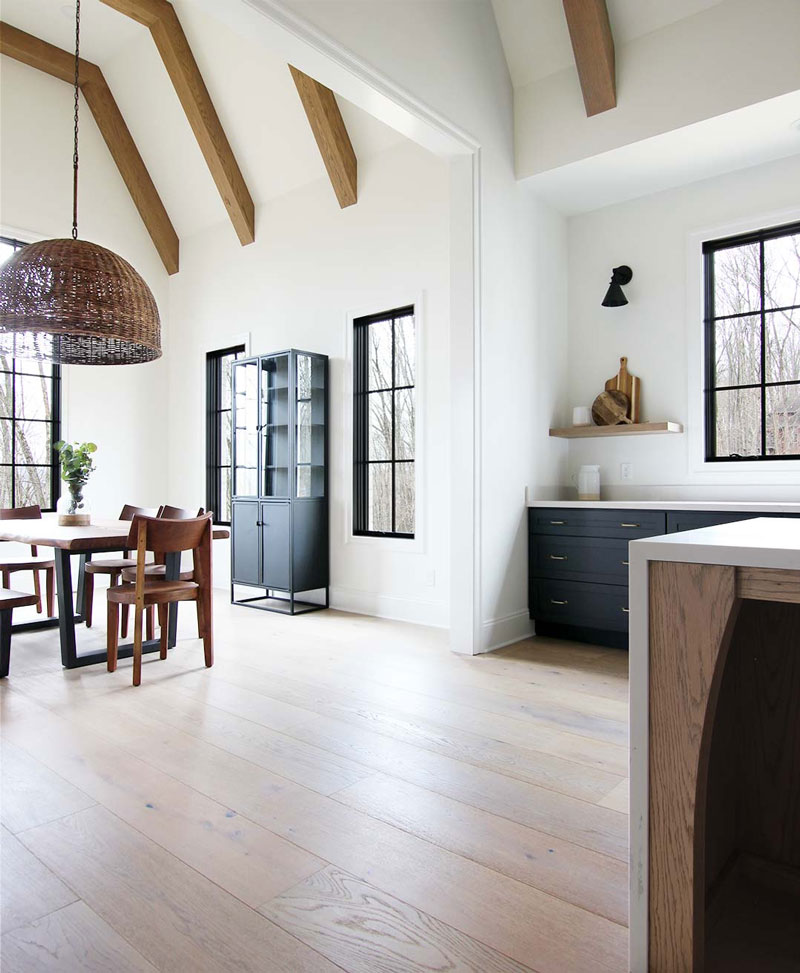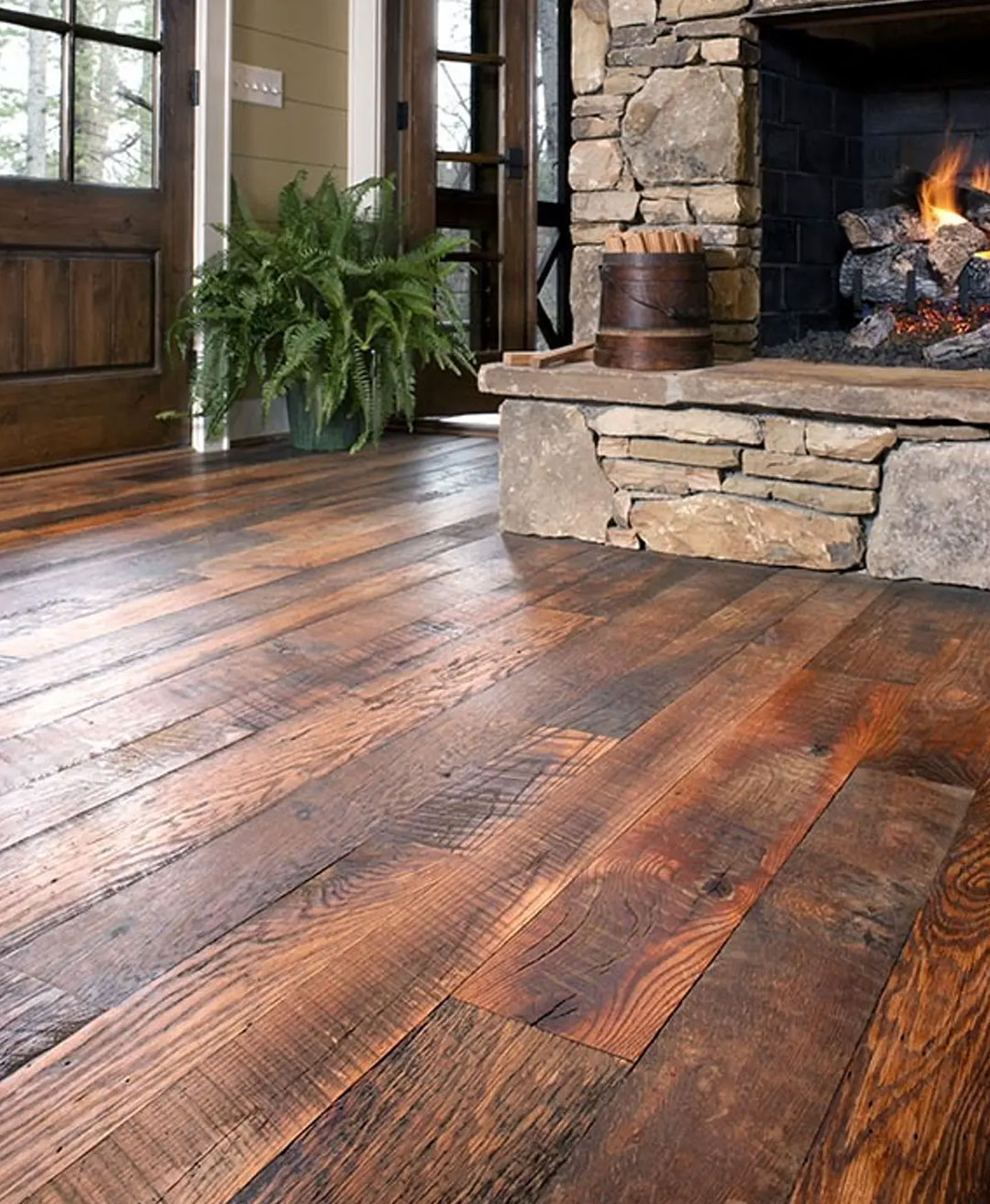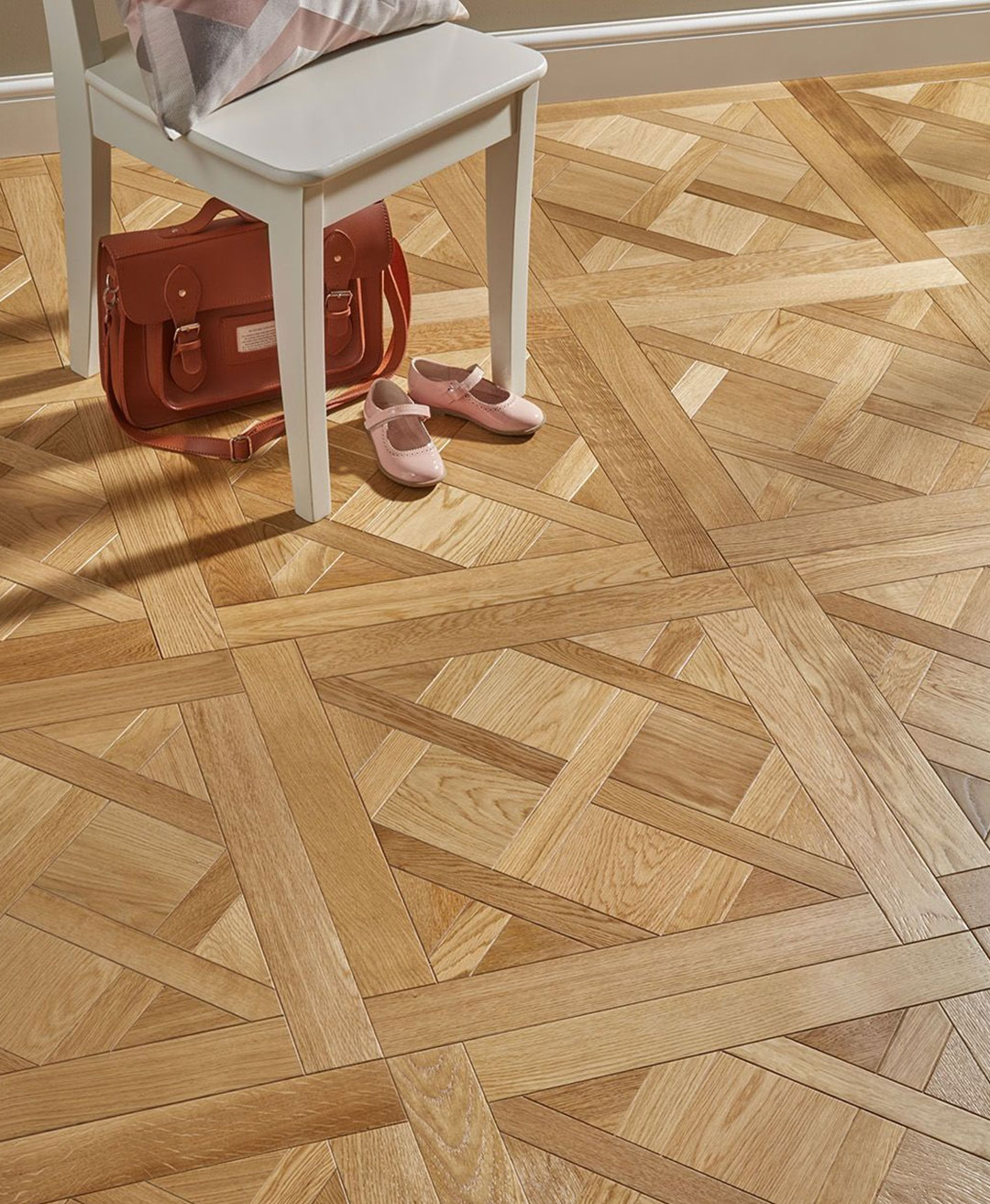Types of Floors
What’s the best type of wood floor for you? That depends. Cost is important, of course. You have to consider the initial cost of the flooring, as well as the cost of maintenance and how long your floor will last. Looks are important, too. You want to choose flooring that adds to the value of your home and your quality of life.
There are several factors that affect which type of flooring will meet your cost and appearance objectives best. They include the surface on which the flooring will be installed, the way the space will be used, where the floor will be in relation to ground level, and the humidity in the home.
In this section we offer you information about each of the main types of wood flooring. For each one, we’ll outline factors you should weigh in your flooring purchase.
Once upon a time there was only one type of hardwood floor. It was made of solid wood planks. But solid wood flooring is only suitable for some situations and environments.
Today we call that type of floor solid flooring and it’s only one of four main types of wood flooring. The others are engineered flooring, laminate flooring, and parquet. Each type has situations where it will and will not be the best choice.
Laminate Flooring Toronto
Laminate flooring will give you the same stylish look of hardwood with lower initial cost. Because it is more fade, stain and wear-resistant than wood flooring, your maintenance costs should be lower as well.
Laminate flooring is constructed using four layers. The top, wear, layer is designed to resist stains, fading and wear. The next, “design” layer gives the look of wood or stone. The “inner core,” impregnated with a plastic resin, gives the floor strength and moisture resistance. The bottom layer is a backing that creates a moisture barrier.
Most laminate floors can be used anywhere within your home. They’re suitable for wet areas such as kitchens and bathrooms. Laminate floors can be installed in basements and over radiant heated concrete slabs. Here are the main advantages of laminate flooring.
- The low flammability of laminate floors reduces your fire risk
- Laminate floors are damage resistant, though they can be scratched by pets or dragging heavy objects across the floor
- Laminate flooring is made of natural stock with low levels of toxicity
- Laminate flooring is stain resistant
- Even strong sunlight won’t cause laminate flooring to fade
- Laminate floor don’t allow dust to collect in cracks, making them a great choice for people with allergies
- Laminate flooring is easy to care for
- Laminate flooring can be used over radiant heated concrete slabs
Laminate flooring is divided into types according to wear resistance. Ask your Flooring Consultant for recommendations about where laminate flooring is your best option and which option is best for you.

Engineered Wood Flooring
Engineered wood flooring was first developed for condominiums. It combines the beauty of natural wood with greater moisture resistance.
Engineered wood flooring is made from multiple layers of wood. The top layer is made of solid hardwood. It is supported by lower layers of wood that are laminated together in a crisscross pattern. The three layers are glued together using a cold fusion technology that creates a perfect bond that performs as never before possible.

The layers of an engineered floor will expand and contract in opposite directions. That keeps the floor stable. It’s also the reason that you’ll notice 50 to 75 percent less gaps between boards when compared with solid floors.
Engineered floors come in various thicknesses, widths and lengths. The top wood layer is between 0.5 to 6 mm. The standard thickness is 14-15 mm. Most engineered flooring products can be either glued down or floated, though thicker floors may be nailed for proper installation. Your professional Flooring Consultant can help you make wise choices about what flooring is best for you.
Because of their moisture resistance compared with solid wood floors, engineered wood floors can be used in basements and other areas where moisture might cause problems. Engineered wood floors can be installed over most subfloors, including concrete.
Engineered flooring is almost always pre-varnished. Even so, you can sand your floor and put a new coat of varnish to refresh it. The top layer of engineered flooring is thick enough to be sanded several times if necessary. Most engineered floors can be refinished one to three times.
Solid Wood Flooring
Solid wood flooring is made from solid planks of natural wood. Solid wood floors have been popular for centuries because they’re beautiful and durable. In today’s world, solid wood flooring is also popular because it is recyclable and biodegradable.
In addition, today’s solid hardwood floors offer you a lot of flexibility. You can choose from a wide variety of woods. Planks come in a variety of widths and thicknesses. You can choose either a unfinished floor.
Solid hardwood flooring is more sensitive to moisture than other types. That’s why you should never install solid hardwood flooring in wet environments or below ground level. Because solid hardwood flooring is so sensitive to moisture it is often affected by changes in humidity. In winter, the boards may contract. In summer they may expand. Our Flooring Consultants and professional installers will know how to allow for this.
Solid hardwood flooring is usually nailed or stapled to a subfloor. Our professional installers will always follow the manufacturer’s guidelines.


Parquet Flooring
Parquet floors were developed at the luxurious Palace of Versailles. They can bring a sophisticated decorative touch to your home.
Parquetry uses small pieces of wood to create designs on your floor. These can range from a simple herringbone pattern to an elaborate design featuring different woods. Parquet floors are available prefinished or unfinished. Solid and engineered parquet floors are also available.
Parquet floors used to be extremely sensitive to moisture. When it got too humid, they would bulge or collapse. You don’t have to worry about that any more. Today’s, parquet flooring is resistant to moisture. It can be installed even at the basement level. Parquet floors have several advantages. They can be cleaned easily and resist spills and stains. Parquet floors have environmental advantages over carpeting and synthetic-based floor systems.
Parquet floors are easy to maintain. If parquet flooring show signs of damage, the outside can be easily renewed by applying light sanding and re-sealing using varnish.
The floors in your home or office can look better
We don’t need to convince you – our work speaks for itself. Call us today for a free consultation and quote!
